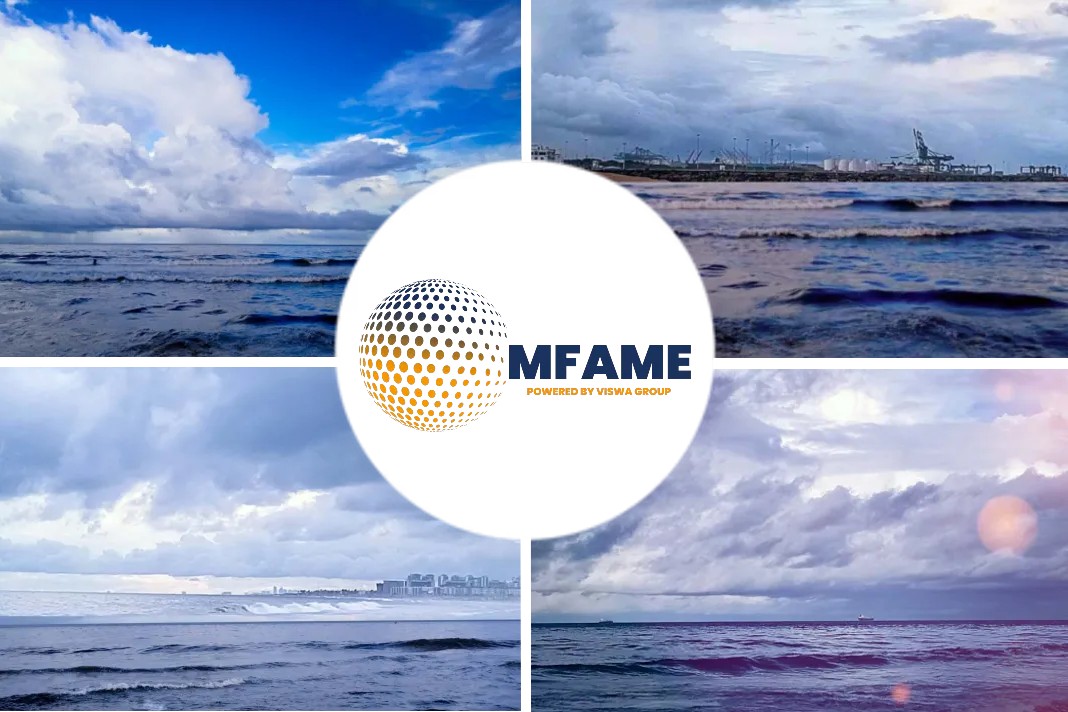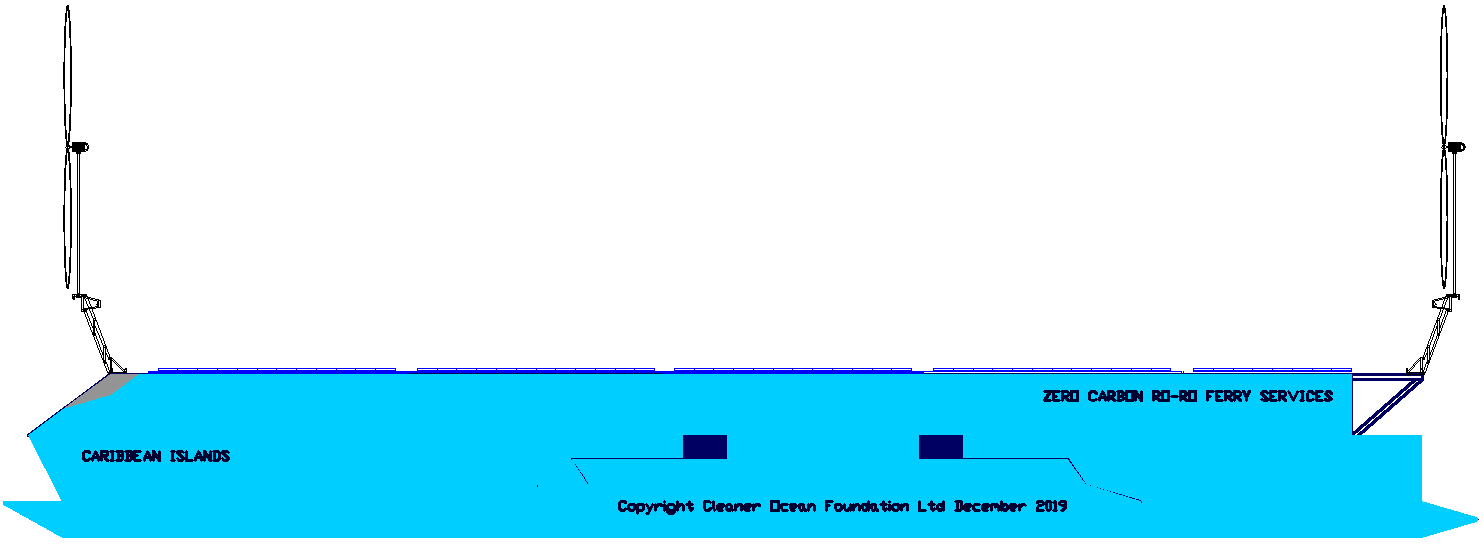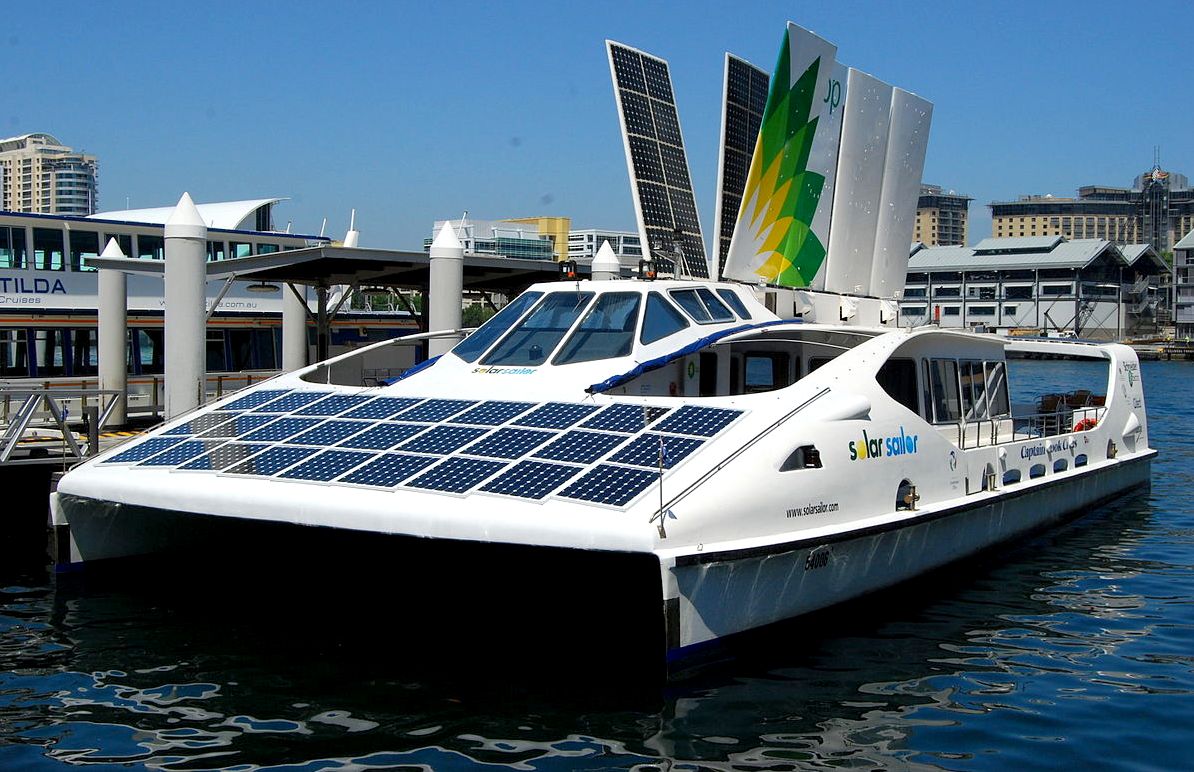With rising fuel costs and the IMO 2020 regulation making it mandatory for ships to use low sulfur fuels, the focus is gradually moving towards other technology like electric ships, wind-assisted ships, LNG. Of this, we are going to talk about the Wind Assisted Ships today.
A study published in Change Climate put forwards how a cargo ship did this back in the 70s.
What is it?
The Ashington was built as an unremarkable general-purpose cargo ship that was registered in London and built by Clelands Shipbuilding Company Limited between 1978-79.
What sets this ship out from many a counterpart, is that in 1986 she was fitted with a Walker Wingsail system in an effort to combat rising oil prices.
Unfortunately, there is limited information as to how well the conversion fared in operation.
Before that in 1985, the subject of optimal route planning was high on the agenda with a conference in Manila to discuss power routing for sail assisted diesel vessels.
Operating experience on the MV Ashington
This is a brief report of a joint presentation in which the development of the Walker Wingsail over the last 20 years was described and information was given on the experiences gained from 5 months’ operation of the device at sea on the 7000 dwt bulk carrier Ashington.
- The sail-set installed has a thrust area of 101 sq m, and is constructed from steel, light alloys, and composite plastic materials.
- The system weighed approximately 8 tonnes.
- The wing-sail operates by trimming itself to the correct angle to the wind and by the computerized setting of the aerofoils to achieve the optimum thrust.
- To avoid any additional workload on the crew a dedicated twin microprocessor system is employed;
- the main computer checks the relative wind speed and direction and determines the sail settings required, responding rapidly to any changes in relative speed and direction and constantly trimming the sail-set to maintain optimum forward thrust, while the second computer monitors the first and triggers an alarm in the event of failure.
It is estimated that the reduction in fuel consumption achievable in a ship fitted with the present design of wingsails over that of a conventional modern ship could be up to 30%.
Power Routing: Optimal sailed -assisted engine use strategy 1985
This was a paper defining and discussing the concept of power routing, as distinct from the course-only weather routing traditionally practiced. The concept is discussed primarily as it relates to the wind (which is responsible for most of the wave motion classified as “sea”) and as it applies to sail-motor vessels. A methodology is described for sail-motor operation that determines the optimal use of engines under different wind conditions.
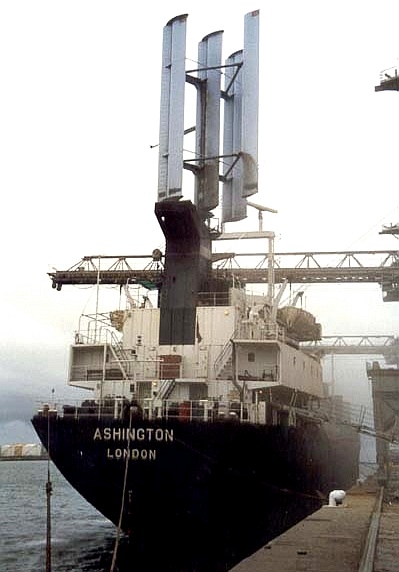 WIND ASSISTED SHIPS – The Ashington cargo vessel from 1979 was fitted with a Walker Wingsail system in 1987 to reduce oil consumption. There has never been a large commercial vessel powered by wind turbines. The closest is the Anton Flettner Rotor.
WIND ASSISTED SHIPS – The Ashington cargo vessel from 1979 was fitted with a Walker Wingsail system in 1987 to reduce oil consumption. There has never been a large commercial vessel powered by wind turbines. The closest is the Anton Flettner Rotor.
Details:
Type: Cargo Ship
Launched: 14/12/1978
Completed: 23/04/1979
Builder: Clelands Shipbuilding Co Ltd
Yard: Willington Quay
Yard Number: 341
Dimensions: 4334grt, 2228nrt, 6570dwt, 97.50 x 16.00 x 9.00metres
Engines: Oil engine, type KMR Major, 8cyl (15 x 18ins), 4300bhp, SR Geared
Engines by: Mirrlees Blackstone Ltd, Stockport
Propulsion: 1 x Screw, 14.0 knots
Construction: Steel
Reg Number: 379883; (IMO: 7717200)
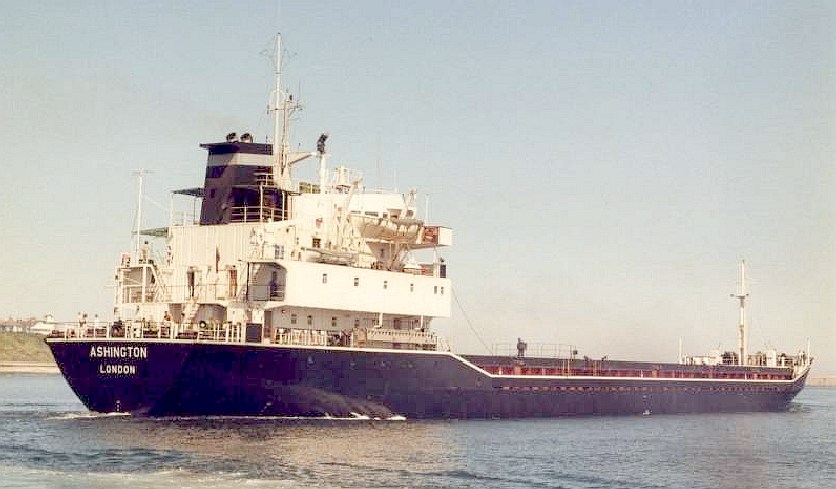 DIESEL POWERED – The Ashington before being converted to take advantage of the wind.
DIESEL POWERED – The Ashington before being converted to take advantage of the wind.
History:
- 23/04/1979 Stephenson Clarke Shipping Ltd; registered at London
- 1989 Registered at Douglas, Isle of Man
- 1997 Ashington KS (Continental Ship Management A/S); registered at Nassau
- 2004 Stoneship Invest A/S (Continental Ship Management A/S), Nassau renamed FJORD PEARL
- 2007 JP Ship AS (Hav Ship Management AS); registered at Bergen; renamed JP FOX
- 2008 Mr Ragab Hamada Ragab Arafa (Engy Shipping Lines Co)
- 2008 Registered at Panama; renamed MILANO STAR
- 1987: Fitted with a Walker Wingsail to reduce oil consumption
- 29/10/2012: Broken up at Aliaga by Kursan
SUSTAINABLE CONTAINER SHIPS – This 50m concept vessel may be doubled and quadrupled without too much trouble. You’d need to up-scale by a factor of 8 to match the 400 meter ships that operate today to carry 960 standard containers. See our top ten list below. That is nowhere near the capacity of a heavy bunker fueled giant, but it is a formula for eventual 100% zero carbon transportation that is theoretically workable. We believe that such a system could eventually replace bunker fuels and eliminate the need for liquid fuels that may be potentially dangerous.
CARGO CONTENDERS A list of the top ten fossil fueled leaders that could benefit from solar and wind assistance. You may notice from the specification of these vessels that we are in the right ballpark for power to cargo ratio when comparing DWT to installed engine power:
|
RANKED |
SHIP NAME |
No. BUILT |
LOA |
KW/TON/DWT | |
|
– |
– |
– |
– |
– |
– |
|
1. |
5 |
399.9 |
23,756 |
0.379 (0.50hp) | |
|
2. |
5 |
399.9 |
21,413 |
0.316 (0.42hp) | |
|
3. |
3 |
400.0 |
21,237 |
N/A | |
|
4. |
2 |
400.0 |
20,954 |
0.368 (0.49hp) | |
|
5. |
10 |
399.0 |
20,568 |
0.3 (0.4hp) | |
|
6. |
10 |
400.0 |
20,388 |
N/A | |
|
7. |
1 |
399.0 |
20,182 |
N/A | |
|
8. |
3 |
400.0 |
20,170 |
0.427 (0.57hp) | |
|
9. |
4 |
399.8 |
20,119 |
N/A | |
|
10. |
5 |
400.0 |
19,870 |
N/A | |
|
– |
– |
– |
– |
– |
– |
|
00 (Proto) |
– |
50.0 |
6 |
0.37 (0.49hp) |
ZERO CARBON RORO – This is a small roll-on roll-off ferry designed to carry 12 large vans, with passenger rooms below decks. She is a zero carbon design featuring twin wind generators that also add to thrust directly from the wind (like sails) and a full deck of solar panels that track the sun – including a battery store. The age of zero carbon shipping is dawning, with designs like this leading the way. Design Copyright © December 6 2019.
Best Combined Wind Systems
The concept of using wind and solar power together on ships is no longer science fiction, nor is it decades away. There are a number of interesting concepts under development.
- In our view the first practical application of combined wind and solar power was with Solar Sailor, where sails were also solar panels that could be aimed.
- Before this, in the 1980’s several Japanese ships were fitted with rigid sails with the aim of reducing fuel consumption, driven largely by the oil crisis in the 1970’s which resulted in oil shortages and the price of oil soaring.
-
When the crisis passed and oil prices fell again, the viability of rigid sails in terms of cost was undermined.
Despite this ships such as the ‘Shin Aitoku Maru’ and ‘Usuki Pioneer’ were fitted with JAMDA (Japan Marine Machinery Development Association) rigid sails that reportedly proved rigid sails reduced fuel consumption (hence carbon footprint) by approximately 10-30%.
The search continues for the best combined wind system, and that is where we come in.
Did you subscribe to our daily newsletter?
It’s Free! Click here to Subscribe!
Source: Change Climate






